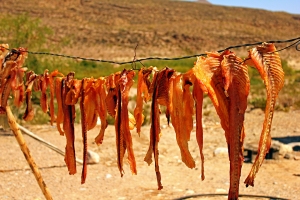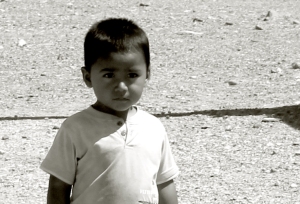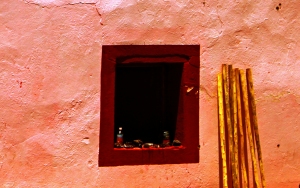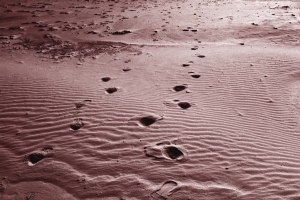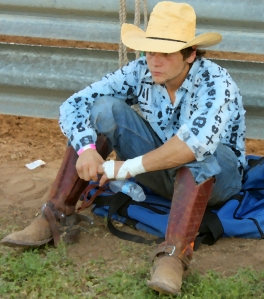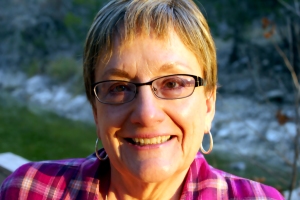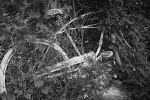Boquillas Del Carmen–The Road to Mexico
Boquillas del Carmen is either at the end of the road or the first place you come to headed towards Central Mexico. I suppose it all depends on perspective. It lies across the Rio Grande/Rio Bravo from Big Bend National Park. It is next to the magic river that divides and conquers so many things between our countries and cultures. On one side lies a huge National Park, suitable for recreation by gringos who like hiking, the high desert, beautiful mountains, and deep canyons. On the other side, literally and figuratively a stone’s throw, without any kind of fence or the need of one, lies Boquilla del Carmen, Coahuila. What kind of place is it exactly? It is hard to tell, hard to explain, hard to imagine and hard to live with after you have been there.
When Stacy and I began planning our trip to Big Bend, she read that they might have the crossing open after being closed for over 11 years. Frankly we were both anxious to see what the trip across the river would be like. What I know about Boquillas comes from our visit, the stories of our guide Esteban, and a few things I have read on the web, particularly about the re-opening of the crossing.
There are a few things you need to know about trying to cross into Boquillas. You must have a passport. You cannot cross over at all without one. You also have to show your passport on the Mexican side and again when you return to the US. You need to bring cash with you, a good bit actually. The boat ride over is $5 a person, the ride to the village is $5 a person and meals, if you decide to eat meals run at least $7 a person for a simple, but good meal. If you choose to buy any of the handcrafted items like walking sticks, bracelets, wire scorpions or embroidered bags, you will need more cash. The tourist paper allowing you to enter the country, is free on the Mexican side.
Boquillas del Carmen used to be a mining town. Evidently during the 40’s and 50’s the mines that operated in the area used a low water crossing to send the ore they were mining to be processed in the states. There were according to our guide about 300 familes in the village. Once Big Bend became a thriving national park, they closed the roads to the mining trucks. Because Boquillas is the end of the road, the mining stopped. It was too far to travel to Piedras Negras or Ojinaga. When the mining died, tourism evidently became the chief source of income. There was even a hotel for a long time. It is said Robert Earl Keene wrote the song Gringo Honeymoon about Boquillas. There are still hot springs in the area. It was also a place a lot of college students would use to cross over and drink at the Park Bar. Personally, it seems like a long way from everywhere just to go and drink.
Then in 2001-2002 everything changed. The US closed all non-essential border crossings. Boquillas del Carmen died. It became largely a ghost town, with only about thirty families holding on. There were other places to get into Mexico and Boquillas stopped being one. Right across the river, the Big Bend Park, Terlingua, Marathon, Alpine, and Marfa became the tourist spots. Esteban moved his family to Muzquiz about 125 km away so his children could attend school. He was very proud of the fact that his daughter finished University and was teaching school. He says he returned to Boquillas to be a guide to earn some extra money and see if village really could be revived.
About the trip: You park your car in a very secure lot in front of the US Park Service Building. It is the only way over. There are no Immigration or Customs officials in the building. You walk through the building then down to the river. From across the way, you can see men and boys waiting for you. The boat is rowed across the river, and picks you up. As you cross, Victor who appears to be the “jefe” of the group, sings Mexican songs like Cielito Lindo. I joined in. It takes about one minute to cross. Suddenly you are in another place.
To actually get to the village there are several options: You can walk the ¾ of a mile on the road, you can take a truck ride or even rent a horse. There had to be at least ten horses at the crossing, 3 or 4 pickup truck taxis, and boys and men wanting you to choose them. Ride up in a truck, it is better than the horses. You do not actually need a guide, but we wanted one. We were assigned Esteban. He was a gentleman who spoke excellent English although I preferred to speak Spanish to him. You ride to the only air conditioned spot in the whole village, the Mexican Immigration office. You have to get a Tourist Visa from them. The men who were there the day we crossed were wonderful conversationalists and very efficient. They will remind you to get back across the river by 6 PM.
Esteban showed us the village, made up mostly of small adobe or cinder block houses that was once his home, now his livelihood again, and still a part of his heart. We walked down the main street, stopped by a cooperative craft market, then walked over to his nephew’s house. Hanging out on the line were dried fish his nephew had caught in the river. His nephew’s wife had made some very nice embroidered pieces. He showed us the hot springs close to their house that serves as the village bathing spot.
The town itself is a mixture of old ruined buildings, some newer homes, one bar, and a couple of restaurants. We ate at one and enjoyed the meal; tamales, enchiladas potosinas and good cold Mexican Coca Cola. There is no electricity in the town although there are lines and poles. Quite a few homes have solar panels for electricity. The men at the Immigration office had to turn off their generators at 9 PM. They said it made for long nights.
There is this deep contrast that I felt walking the streets. I have been in many small Mexican villages all over the country. I have seen the poverty that can be so endemic. It was almost like the town itself was trying so very hard to exist. The ruins and the solar panels just added to the contrast.
For the Mexican curious there are of course los curios. Everyone tried to sell something. Little children would come out as they saw the gringos with bracelets or the metal scorpions. Even if you did want to buy something or everything, it was hard to resist a four-year-old asking you to buy something, anything. The one “nice tienda” in the town had all the same stock clothes, trinkets, pottery, huaraches, and “junk” that any other store in a border town would have. It was all neatly arranged and on display. That part of Mexico doesn’t really attract me much.
What we saw too were people, all sorts of people trying to sell you something of their pueblo, their tierra, to take back to the US. It is like Boquillas and the people that live there now, want to sell you Mexico. They want you to buy something, take it back to the United States across the river, something so you can “remember” Mexico or at least Boquillas.
Boquillas is either the end of the road, a door to Mexico or just there. There is a melancholy about our visit that still haunts me. I think of Esteban often, hoping he has some good days as a guide. I think of those people trying to hold on in the high desert, and semi-deserted town. The Park Bar will not rock on until 3 or 4 in the morning. I am sure or at least was told, that the town basically stops at dark. If it is the end of the road, like so many other places in Mexico, the Federal and state governments will promise a lot and deliver not so much. If it is the door to Mexico, it is basically impossible for a gringo to go anywhere else.
It takes two minutes to cross the river but it will take years and a lot of hope for Boquillas to become an extension of Big Bend tourism. Selling Mexico to gringos is a full time business in every tourist town from Cozumel to Baja California, or up to Boquillas. We want with some primal desire to visit the places, get what we can in enjoyment and leave the people there with more wire scorpions and bracelets than they will ever sell. The guy hawking the condo on the beach at Playa del Carmen is no different really. It isn’t that selling Mexico is so hard, it is just hard for us to buy it sometimes.
We visited the small Catholic chapel. La Señora del Carmen is there with Jesus at her side. She did not want to sell us anything. The rosary laid out on the table was very beautiful. She is watching over the village that bears her name. What I hope is that as she watches the gringos come and go, and the people who come there to pray for their families, health, and a little bit of luck she looks down the road and across the river and brings a bit of blessing to everyone who comes.


